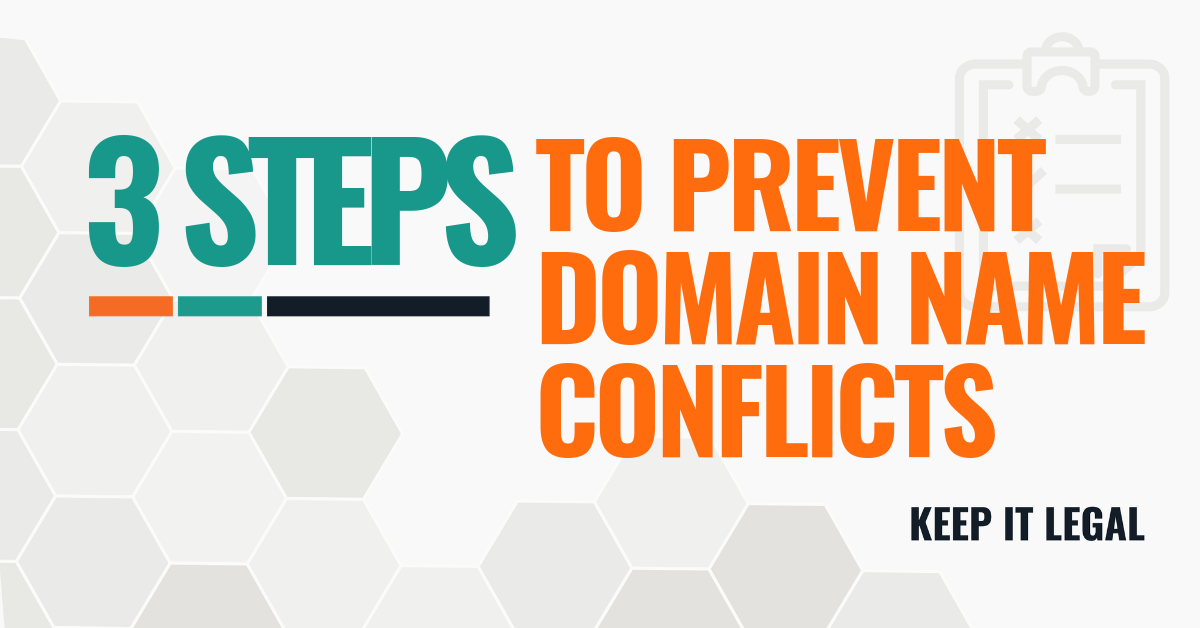Given the widespread use of websites to promote businesses, it’s no wonder that domain name conflicts are on the rise. A domain name conflict typically occurs when the owner of a website address (i.e., the domain name) is not the same as the owner of a similar trademark. To illustrate the problem, let me give you a hypothetical domain name conflict.
Let’s say there’s a grandmother in Del Mar who makes custom T-shirts. Because she isn’t very mobile anymore, she sells her shirts exclusively through her website, www.HappyTs.com. Two years after she starts doing business, a fashion designer out of La Jolla opens a brick-and-mortar business called “Happy Ts.” As part of his startup plan, he obtains a registered trademark for the name HAPPY TS and a corresponding logo.
When the fashion designer in our example goes to set up his website, he’s shocked to discover a blatant domain name conflict with the woman in Del Mar. He calls his trademark attorney and learns for the first time that his registered trademark did not grant him any automatic rights to HappyTs.com. Instead, it’s going to take time and money to resolve this critical conflict.
With careful planning, this common scenario can be avoided. Here are three important steps businesses can take to prevent domain name conflicts.
#1: Claim All Variations of Your Domain Name
Domain name conflicts often aren’t cut and dried. Going back to our example, imagine that the fashion designer was able to purchase www.HappyTs.com but that the grandmother in Del Mar owned a very similar domain name, www.HappyTees.com. Although there isn’t a direct conflict, there could still be a diversion of traffic away from the fashion designer’s site to the slightly different domain owned by the grandmother.
That’s why one of the best tips for avoiding domain name conflicts is to purchase—from the outset—all domain names that are close to the one you wish to claim. In our example, those might include:
www.HappyTs.net
It may cost a few hundred dollars per year to keep the registration of these websites current. However, that’s a pittance compared to what it would cost to hire a lawyer to get the sites taken down and/or to purchase a related domain from the existing owner.
Another benefit of purchasing all similar domain names is that you can direct all traffic that flows to the alternate sites over to your main address. At the same time, you’re drastically reducing the risk of someone setting up a similar site and diverting your web traffic their way.
#2: Check for Domain Name Conflicts Early
When it comes to domain name conflicts, I tend to see two scenarios frequently. On one hand, there are business owners who go to great lengths during startup to check for conflicting domain names. On the other hand, there are those who ignore domain names altogether, but spend a great deal of time and money searching for conflicting trademarks.
Although trademarks and domain names are two different animals, they should be considered together—and selected carefully—as part of your startup plan. With full knowledge of the availability of both assets up front, a business owner will likely prevent later domain name conflicts.
#3: Protect Your Brand
Finally, it’s important to remember that just because you own a domain name, it doesn’t mean you have trademark rights. If your domain name is also the brand name of your business, product, or service, you should always consider registering the brand name as a trademark.
Of course, as part of that process, you need to determine if someone else already holds the trademark that corresponds with your brand and web domain name. If that’s the case, then using your validly purchased domain name may violate someone else’s trademark rights, and the branding you planned to rely on may be completely unavailable to you.
The best way to avoid domain name conflicts is to conduct a U.S. Full Availability Trademark Search as you’re considering domain purchases. I perform these comprehensive searches all the time. Contact me for help clearing your domain name.


